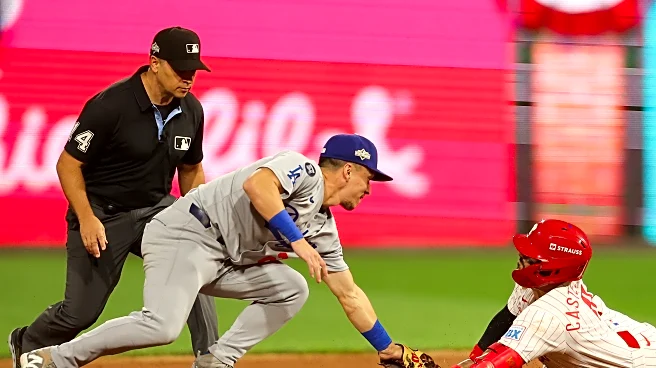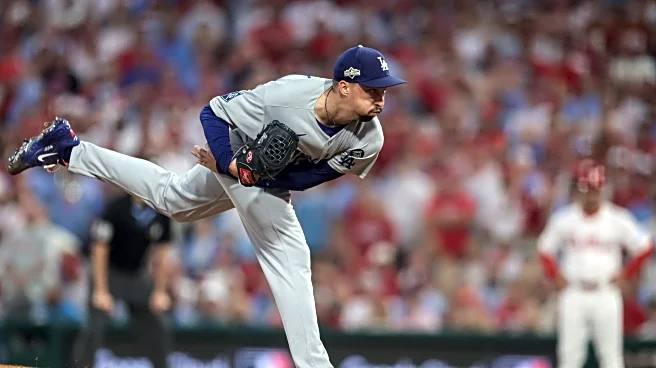What's Happening?
Dodgers manager Dave Roberts made a strategic decision during Game 2 of the National League Division Series against the Philadelphia Phillies. Despite having a three-run lead, Roberts chose to give the save opportunity to veteran pitcher Blake Treinen instead of the team's emerging relief star, Roki Sasaki. Sasaki, a 23-year-old right-hander, has been impressive since returning from a shoulder injury, showcasing a 100-mph fastball and an unhittable splitter in four scoreless outings. However, Roberts decided to manage Sasaki's workload carefully, given his recent appearances in the wild card series and Game 1 of the NLDS. Treinen, who has had a challenging season, was trusted to maintain the lead, allowing Sasaki to rest despite the save situation.
Why It's Important?
The decision to rest Roki Sasaki highlights the Dodgers' strategic approach to player management during the postseason. Sasaki's potential as a dominant relief pitcher is crucial for the Dodgers' success, but his health and endurance are equally important. By opting for Treinen, Roberts is prioritizing long-term performance over immediate gains, which could be vital as the Dodgers aim for a World Series title. This decision reflects the broader challenges teams face in balancing player health with competitive demands, impacting how teams strategize in high-stakes games.
What's Next?
The Dodgers will continue their NLDS series against the Phillies, with upcoming games scheduled at Dodger Stadium and Philadelphia. The team's management of Sasaki's workload will be closely watched, as his performance could be pivotal in the Dodgers' postseason journey. Fans and analysts will be keen to see how Roberts' decision affects the team's dynamics and whether Sasaki will be utilized in future critical moments.
Beyond the Headlines
Roberts' decision underscores the evolving role of analytics and player health management in baseball. As teams increasingly rely on data to inform decisions, the balance between immediate performance and long-term player health becomes more complex. This approach may influence how other teams manage their rosters, potentially leading to broader shifts in baseball strategy.











